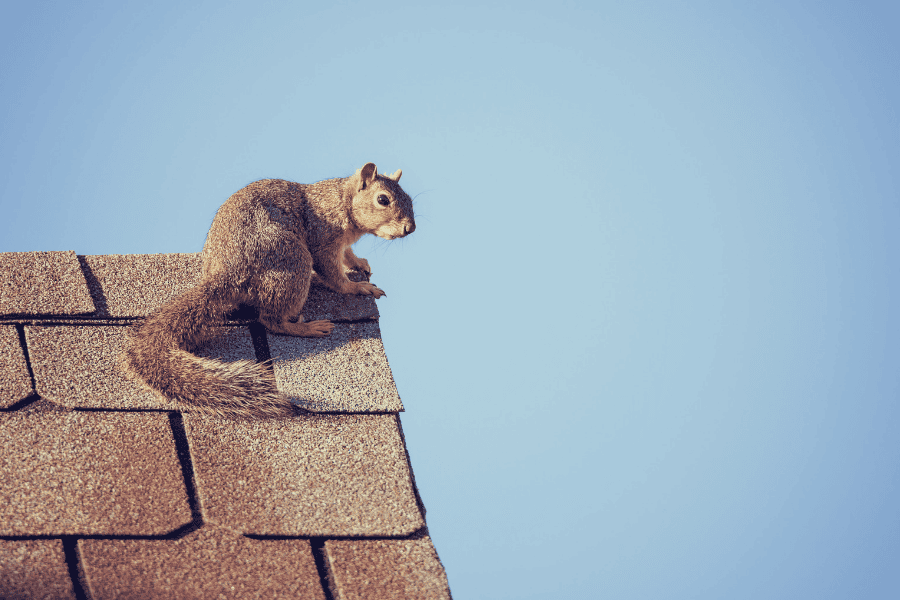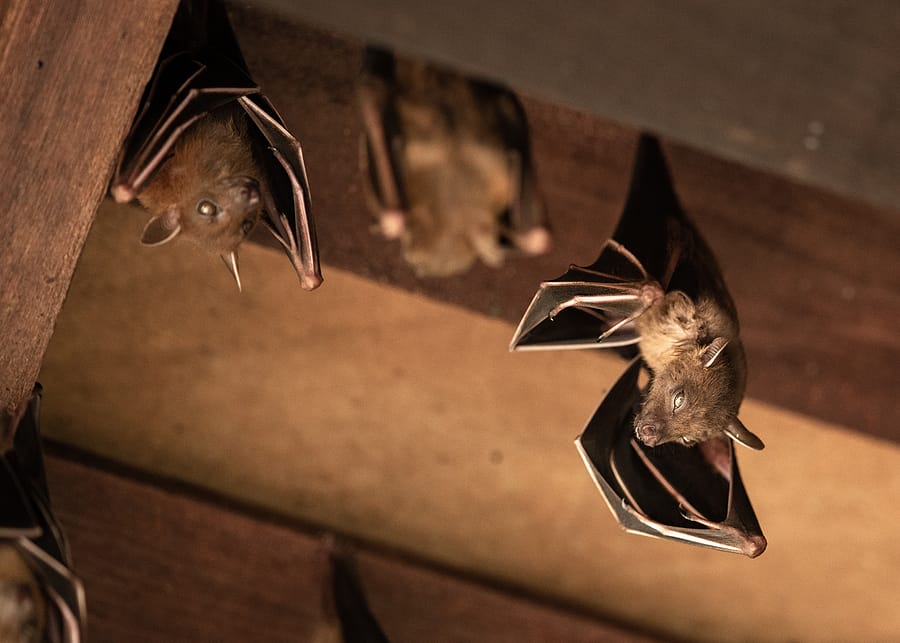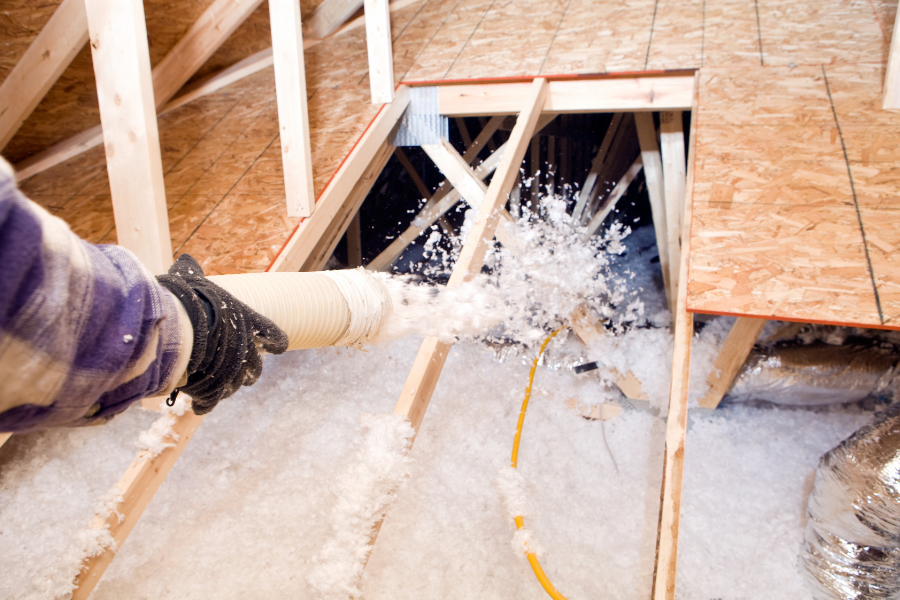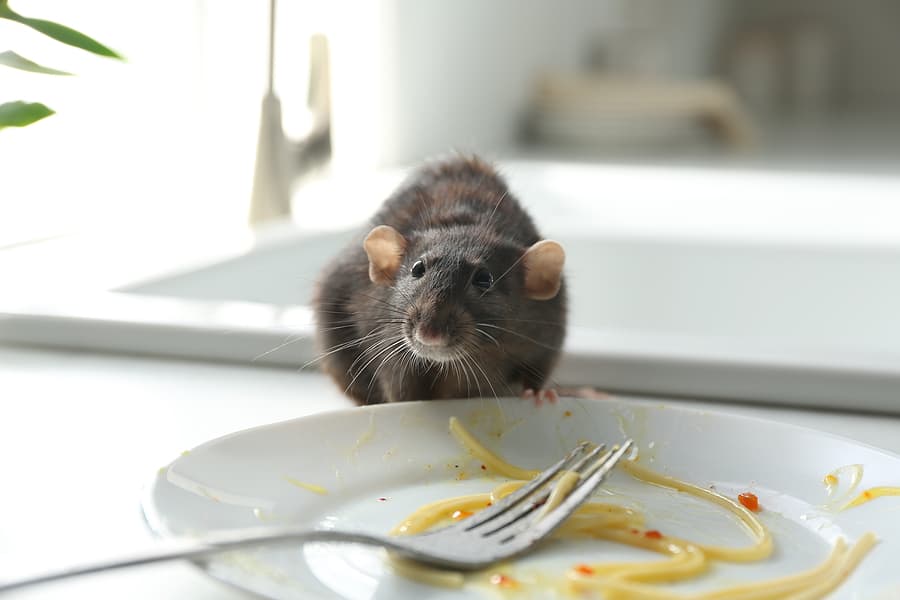READY TO GET STARTED?
REQUEST A FREE ESTIMATE
Fill out the form below or call (888) 466-7849 for a free, no-obligation estimate.

Summer is a time when wildlife is often more active and visible around your home. While it can be exciting to see these animals, it’s important to take precautions to keep them out of your home and prevent any potential damage. Here is the most common summer wildlife you’ll begin seeing soon and some tips on how you can keep these critters away!
Squirrels are a common sight in many neighborhoods during the summer. While they can be fun to watch, they can also cause damage to your home and property.
To prevent squirrels in your attic or crawlspace:
Raccoons are another common summer wildlife that you may find around your home. They can be attracted to garbage cans and compost bins.
To prevent raccoons from being attracted to your property:
Snakes are more active during the summer months and may be found around your home or yard. It’s not often that you’ll see venomous snakes near your property, but there are some that live in Georgia. Just be on the lookout while outside hiking or walking through wooded areas.
To prevent snakes from entering your home:
We hope these tips will help lessen the chances of wildlife finding their way indoors this summer. If you begin to suspect your home might have some uninvited guests, give your local wildlife control company a call today!

While Florida sees warmer temperatures year-round compared to other states, there’s bound to be a cold front hit during the winter season. Wildlife creatures look to our Harlem Heights homes for food, shelter, and warmth. Before they enter, it’s important for every homeowner to brush up on their knowledge of the types of winter wildlife and how to prevent them!
Rats and mice are notorious for entering our homes for shelter and food. These creatures are known to inhabit our crawl spaces, basements, kitchens, and attics. Once inside they can cause serious damage, such as chewing wire, destroying insulation, and leaving behind their feces.
Rats and mice are known to carry and spread diseases such as salmonella, lice, fleas, and ticks. Their droppings can also contain pathogens, dangerous to humans. Major signs of these creatures inside your home are hearing noises coming from the walls or ceilings, such as tapping or scratching.
Nocturnal animals, raccoons are dexterous, often opening doorknobs, cabinet doors, and trashcan lids to search for any available food source. These creatures are known to inhabit suburbs, and you will often find them invading hollow trees, attics, or garages.
Raccoons can cause significant damage to the outside of your home such as ripping of shingles, fascia boards, and even chimney vents! If they infest inside, they will destroy insulation, chew electrical wires, and contaminate the home with their urine and feces.
Bats are looking for a protected place that stays above freezing to inhabit. These creatures will often look to our attics for shelter, so they can huddle in a group together. If you suspect you have bats inside, don’t be surprised if there’s a group of them instead of just one. Bats will usually stay in attics during the day, leaving at night to search for a food source.
These creatures are known to carry diseases, such as rabies, which can spread to humans. In several states, removing bats is a delicate matter and will need to be done by a professional.
Preventing wildlife can seem daunting but there are a few easy ways you can keep them from invading your home. Check out our top wildlife prevention tips below:

The weather is still a bit chilly, but spring is just around the corner and that means more wildlife will be out and about. Just because they left your attic alone this past winter doesn’t mean they won’t be attracted to it for the springtime. This is the time of year they will be searching for shelter to bear and rear their young. They are well-adapted to urban life and will typically be attracted to homes to find a safe place to settle down. Let’s go over which animals it’s time to keep an eye out for:
Most wildlife creatures are generally harmless but can be problematic if they get inside your home. Wildlife control begins with prevention. Here are some handy tips:
If you suspect a problem with wildlife or other pests, give your local wildlife control company a call today for a free inspection!

Winter is nearing and that means it is time to make sure your attic doesn’t become a sanctuary for wildlife critters. The most common winter wildlife critters that you should keep an eye out for this winter are raccoons, squirrels, bats, and mice. They can all cause severe damage to your home and pose a significant threat to your health.
The most obvious way for wildlife to get into your attic is through vents and any gaps in your home’s exterior. Once inside, they can make their nest in your attic which results in ripped or destroyed insulation. They could also begin compromising the well-being of your attic from their urine or feces. This can make for a smelly home or become a hazard to your family’s health since animal waste can contain parasites or bacteria.
If you discover wildlife has taken over your attic, then it’s best to call in professional help to get them removed. If your insulation has been impacted, then it’s imperative to get it replaced as soon as possible. Insulation that has been removed or contaminated can lead to higher energy bills and no one wants that.
Reach out to your local wildlife control company to assist with the removal of these pests, so you can get back to enjoying your home this winter!

Wildlife creatures can be cute from afar, but once they’ve invaded our homes, they quickly become a nuisance! While wildlife typically invade homes in the winter, they are still highly active in the summer, as well, searching for food and water sources. Check out our list of common wildlife creatures in Pompano Beach and how you can prevent them.
Active year-round, rats are excellent climbers and will adapt to human environments. They often seek out undisturbed areas such as attics, basements, and crawlspaces. For survival, these rodents will need a food source and will look in your home for grains, nuts, fruits, seeds, and vegetables. Harmful to humans, rats are known to contaminate food, cause fire hazards by chewing wires, and leave their droppings that can lead to disease.
During the summer, opossums are actively hunting for food for their young. During the day, these pests will hide in trees until the evening arrives. As nocturnal pests, opossums look for their food source primarily at night. Opossums will scour your trashcans for nuts, fruits, grains, and even insects.
Raccoons give birth to their young during the summer and, like opossums, they are actively looking for food for their babies. While raccoons prefer wooded areas to inhabit with trees, water, and vegetation, they can be found in human areas too. They often seek out shelter in our attics, barns, and sheds. Raccoons are also nocturnal, searching for food at night. These creatures eat fruits, nuts, seeds, fish, and even snakes. Raccoons can become a nuisance if they find their way onto our property, often knocking over garbage cans or destroying gardens.
Preventing wildlife starts with the preventative measures put in place around your home. Consider utilizing these do-it-yourself wildlife control tips: